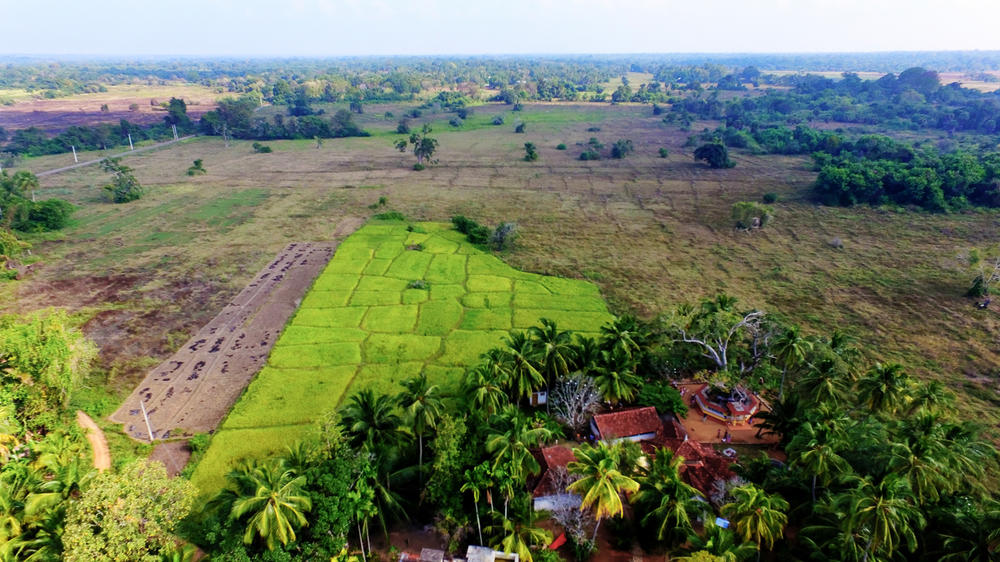Application of natural fertilizers and measures of pest control
Besides artificial fertilizers and pesticides, local farmers only rarely use natural methods for fertilizing rice cultivation in the Anuradhapura district (Abeywardana et. al 2019). Some of the natural methods are:
- Farmers allow cattle to graze in the paddy fields after the harvesting season. Through this method cow dung and urine are used as fertilizers.
- Green manure is added to the soil during the tillage process. This takes place when the terraced paddy fields (liyadi) are flooded with water after tilling and the vegetation debris from the cleared ridges in the paddy field and the rice straw mix with the water; in this manner a considerable amount of fertilizer is added to the soil.
- Cutting up madu flower (Cycus circinalis) and placing the sliced pieces in several places and at the same level as the paddy for three days to deter particular insects. Some farmers burn the flowers to achieve an especially strong smell.
- Chopped kohomba leaves (neem tree/Azadirachta indica) are used as pesticides: after being rinsed in a water basket for two weeks they are then spread over the paddy fields.
-
Chopped kala wel (Derris canarensis) and chopped gliricidi (Gliricidia sepium) are spread over the paddy field to prevent plant worms.
-
Chopped and raw papaya fruit is spread to control rats.
-
kem, a secret treatment, is practised; this is characterized by a number of actions which are believed to be followed by certain reactions. These methods differ according to the individual applying them and are transferred as part of indigenous knowledge.
